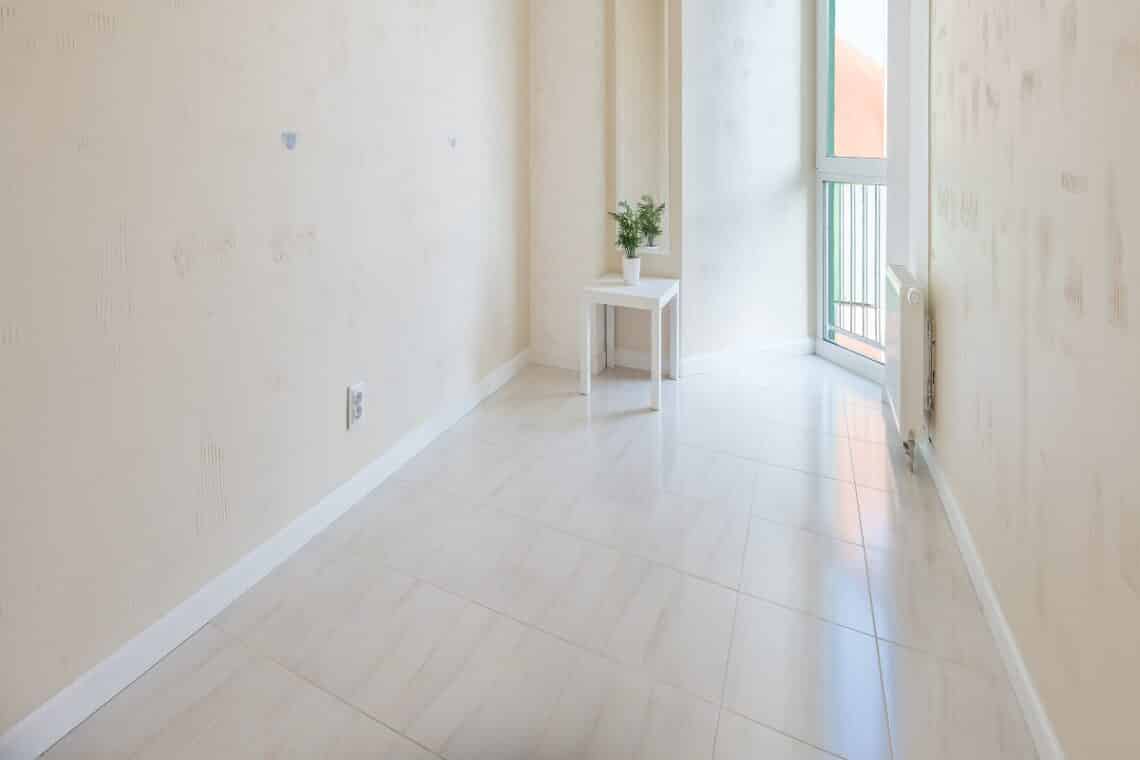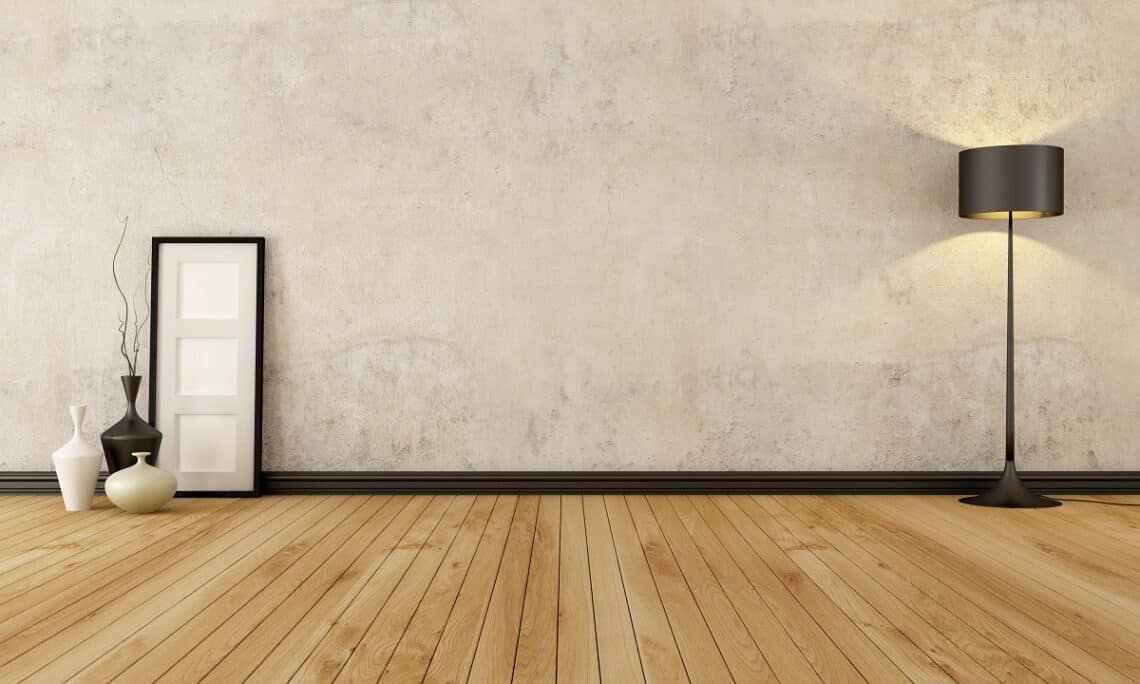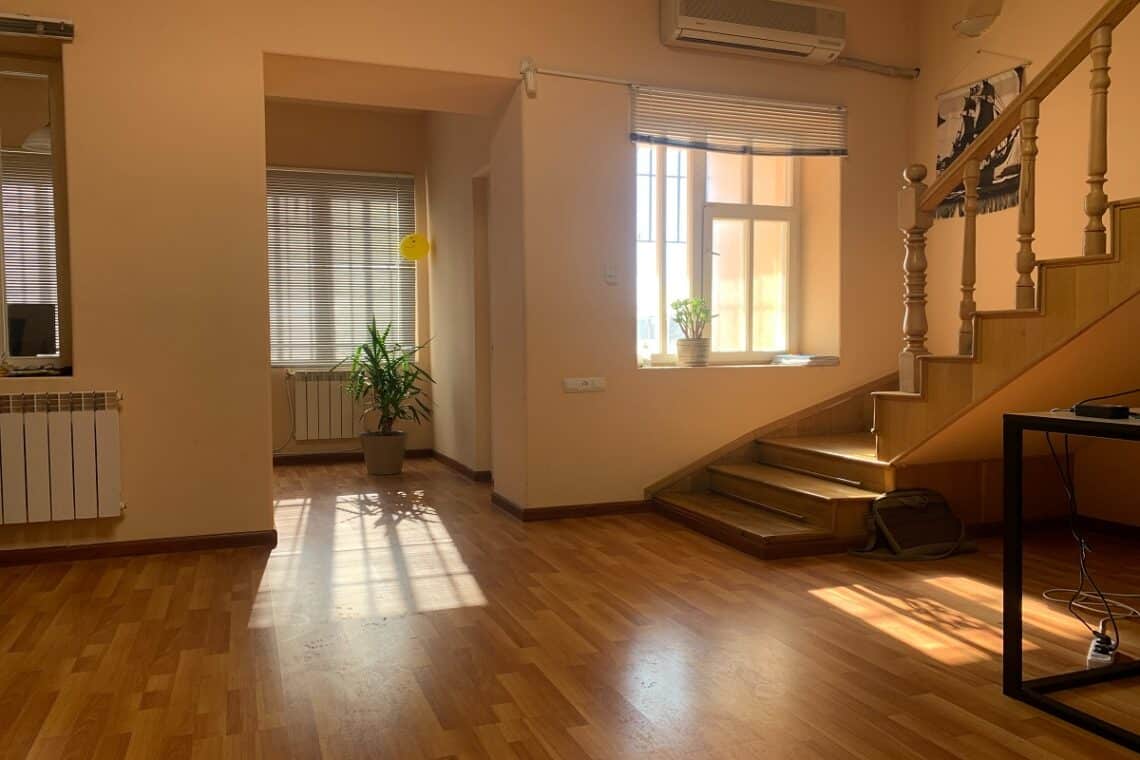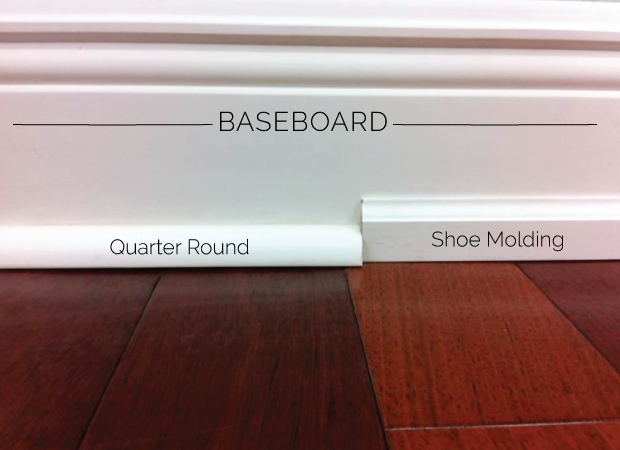Making a smooth curve in projects can be a difficult mold effect to pull off. The quarter round and shoe mold are two popular methods of attaining this curvature.
Having a unique curve in a room can change the entire feel of the project or space. It is a way to keep the sharper edges of furniture or edges of the walls from sticking out.
A mold is used in order to keep these curves as clean and smooth as possible. The quarter round and shoe mold can essentially do each other’s jobs in terms of making a smooth curve; however, they each have unique designs and differences.
Featured Image Photo Courtesy of pinklittlenotebook.com
So, what is the difference between these two? Here’s where you’ll find out.
Quarter Round vs. Shoe Molding
![Quarter Round Vs. Shoe Molding [A Clear Winner?] 9 Quarter round vs. Shoe molding](https://dev.architecturelab.net/wp-content/uploads/2022/01/Quarter-Round-vs.-Shoe-Molding-2-525x350.jpg)
What Is A Quarter-Round Mold?
Quarter-round molds are used to produce a prominent curve along fixed surfaces. With a width of ¾” available in many sizes, the quarter round is considered a versatile mold.
When it comes to the design of the mold, these are typically made of wood. The reason it is called a quarter round is, in a crosscut, the shape of the mold takes on a quarter of a circle.
![Quarter Round Vs. Shoe Molding [A Clear Winner?] 10 Quarter round mold](https://dev.architecturelab.net/wp-content/uploads/2021/01/Quarter-Round-Mold.jpg)
The two flat surfaces of the mold lie against the base and vertical areas of an intersection. Then, the round edge joins the two surfaces to create a flush round transition. Once installed, it can be painted or stained due to its wooden construction.
Typically, this molding is sold in sectional strips of seven feet. It is easy to cut them in order to accommodate the entire area to be covered.
![Quarter Round Vs. Shoe Molding [A Clear Winner?] 11 Quarter round molds](https://dev.architecturelab.net/wp-content/uploads/2021/01/Quarter-Round-Molds-1140x760.jpg)
The ideal length for lining the space between a floor and adjoining walls or countertops is seven feet. Additionally, quarter-round molds come in different sizes that make them versatile for use in not just floor trimming but other areas. So long as the 90-degree angle is present between two surfaces, they will be able to fill in the gaps.
What Is A Shoe Mold?
Also known as a base shoe mold, the shoe mold is extremely similar to a quarter-round mold and is typically used for trimming and lining walls.
Named due to the height at which the mold trimming sits, shoe molds have been around for quite a while. Beginning in the Victorian era of the 1800s, this trimming decor gradually became popular to seal rooms and keep dirt and bugs from creeping in,
![Quarter Round Vs. Shoe Molding [A Clear Winner?] 12 Shoe mold](https://dev.architecturelab.net/wp-content/uploads/2021/01/Shoe-Mold-1140x763.jpg)
Today, these molds are used to create a professional transition between a baseboard and a wall. The small size allows them to fill up gaps between the two.
What sets the shoe mold apart from the quarter-round mold is how drastic the curved effect is. While the latter is a more pronounced curve, the former has a tamer curve.
Moreover, its curvature is less pronounced than the quarter round and has a narrower profile. Measuring half an inch across, the shoe mold’s capabilities in covering the area are limited.
One face of the mold is narrower than the other; this slimmer face should be placed on the baseboard. And a significant disadvantage of using shoe molds is the baseboard should be flat in order for the trimming to grip the wall and create a seamless transition.
![Quarter Round Vs. Shoe Molding [A Clear Winner?] 13 Shoe mold](https://dev.architecturelab.net/wp-content/uploads/2021/01/6df9d053e091e369ae217521a1b47a8e-floor-molding-crown-moldings.jpg)
Due to its flexible nature, the uneven flooring is hidden away within the shoe mold. It is only attached to the baseboard, so it creates the effect of a flat surface, transitioning between floor and wall.
Comparing Quarter Round And Shoe Molding
Shoe molds and quarter-round molds are similar in many ways. Their application between any surfaces at a 90-degree angle with each other is universal.
Adding this extra touch of trimming along the seams elevates a room or product’s quality and craftsmanship. Be it wood, concrete, or stone, both these mold trimmings can be used effectively.
Additionally, the standard sizes of both molds are usually less than an inch in width. This width is sufficient enough to keep the gaps from peeking through the trimming. Furthermore, the material both molds are made up of is usually wood or a wooden veneer variant.
Treating and applying a finishing coat is entirely possible for either mold type. This can make the trimming even more flush with the surrounding material’s aesthetic or be used to highlight the finish.
Where either can be distinguished from the other is the nature of the curve. The quarter-round mold has a smooth curve opposite the two flat faces. On the other hand, the shoe mold has a flatter curve, so to speak. There is a slow ascent from one flat edge, with a sharp curve upwards to meet the other end at the top.
Depending on the effect being sought after, both mold types will yield different results. A quarter round mold draws the eye to the shape of the trimming with its more significant, smoother curve. On the other hand, the shoe mold is more discreet in its presence. It appears flush with the wall, with a slight curve just at the top of it to create a seamless gap to the floor.
![Quarter Round Vs. Shoe Molding [A Clear Winner?] 14 Shoe mold](https://dev.architecturelab.net/wp-content/uploads/2021/01/Shoe-Mold-1140x855.jpeg)
Installing Molding
As both the quarter round and shoe mold have similar base designs, their installation process is quite similar as well. Using the same tools and methods, either of them can be fitted with little effort or experience required.
Before making any renovations, ensure the proper tools and equipment are collected. Some tools that are essential to complete the installation are a utility knife, saw, miter box, nail gun, putty knife, nails, and measuring tape. These tools can make the entire project easier and have a better quality result.
Now that the proper equipment has been gathered, the installation process can begin.
-
Prepping The Wall
Before beginning to apply new trimming to the wall, the old molds need to be removed, and the wall prepped to accommodate the new molds.
Use the utility knife and putty knife to remove any paint and old molding. Remove the paint carefully to preserve the old paint applied on the baseboard. Removing the older mold is a simple matter of pulling it away with a putty knife. The nails will be exposed when you lift the mold up and can then be removed.
To prepare the wall for a new mold, sand and paint the baseboard to ensure the best adhesion possible. Sanding and painting are done to smoothen out the surface of the baseboard for the trimming. The smoother the baseboard, the fewer gaps the trim will have to cover up.
-
Preparing The Mold
Before applying the mold, any finishes or paint you may want to use should be done. Getting the trimming to look the way you want to match the flooring and wall is a more straightforward job when it is not secured to the floor.
Sanding them down lightly before applying any finishing can help the color of the paint last longer on the mold. Using a saw horse set, the mold can then be matched to the molding on the floor.
Once the finishing and painting are done, measure how much trimming is needed to cover the length of the wall. Cutting each piece to the appropriate length can save a lot of work later, and offer a more complete, seamless trimming.
-
Planning
Remember the golden rule when doing any woodwork; measure twice, cut once. This saying applies especially to installing trimming, where even one miscalculation can offset the entire project.
Measure out the entire length of the room, taking into account any overlap of the trimming as well as corners. These minor adjustments can require more trimming than expected.
Corners can be tricky to deal with when measuring out how much molding is needed. There are inside corners that face into the center of the room and outside corners that face away from the center.
For inside corners, use a cope cut on the ends of the molding pieces and then sand them down to create a seamless joint. Alternatively, you can also use a miter saw to join the two at a corner.
Outside corners can be dealt with by using a miter saw on the ends of the molding pieces. The back of the mold should be the miter’s shorter side while also remaining flush with the wall. To increase the bond between the two molding pieces, you can also use a few drops of glue.
Longer stretches of walls require multiple pieces of molding to cover the entire length. To have a seamless transition between different molding pieces cut a 45-degree angle at the intersection of both pieces. Make sure these cuts are in opposite directions to have a seamless fit when the two overlap.
-
Installing The Molding
Once all the measurements have been made, the molding can then be installed. Using a nail gun can make the installation process a breeze and give a finished look overall to the trimming.
Make sure the nails are going through the center of the trimming for a secure fit and to keep any cracks from forming. It is a good idea to space the nails out from each other; this maximizes the strength of each nail while keeping the trimming devoid of any cluster of nails. One to two feet between each nail should be sufficient enough.
A return in the molding is applied when the mold meets a doorway or a particular corner. Making a return can be done using three different methods-the mitered return, bull-nose return, and the alternative wrap-around option.
Depending on the room’s style, different returns will suit different room types. The mitered return is the most common return style used as it is the easiest to apply. Of course, this is as compared to the bull-nose return, which requires multiple tools and has a more complex installation.
If using a return is not in your interests, utilizing a wrap-around is another option. This does away with the return completely by continuing the molding through the doorway and into the adjacent room.
-
Touch-Ups
Once the full length of the room is covered, the trimming is pretty much installed. Any further work required is solely for increasing the aesthetic quality of the mold.
While the molding covers up most of the gaps between the wall and floor, there still may be a few remaining spaces it can not reach. These gaps may be small, but they stand out from the finished look of the trimming.
To fix this, use a caulking gun to fill them up with caulk. Alternatively, an extra nail placed can help secure the piece to cover the gap better. Speaking of nails, the heads of the nails can be hidden away using a nail crayon. This gives a more seamless look to the trimming overall.
With the whole surface of the mold now smooth and uniform, the trimming can now be painted or stained, either matching the flooring and wall or as a standout piece that adds contrast to a room. As the paint has been mostly applied before installing it to the floor and wall, only a few touch-ups are necessary.
It is much easier to have a clean paint application once the trimming is installed by painting and staining beforehand. Furthermore, it removes the risk of any paint or staining dripping onto the floor.
Quarter Round vs. Shoe Molding Frequently Asked Questions
1. What are the advantages of installing molding?
When the flooring is installed in every house, there is a small gap left between the floor and walls. This is left as insurance to accommodate any expansion of the wooden elements in the house.
If the wood expands and no space is left, the different pieces will rub against each other and eventually cause damage and wear away the wood. As a result, the gap is necessary to keep this wear and tear from happening.
However, the gap is wide enough to allow dust and small bugs to pass between and enter the room. Applying a mold can seal off this gap and keep any unwanted elements outside. Not to mention the aesthetic qualities a mold brings to a room.
2. What can shoe molding be used for?
Shoe molds are an excellent option for filling the gap between a wall and a floor. Due to their flat, stout build, they are low-key and appear to remain flush against the wall better than quarter round molds.
The curvature of the shoe mold is not as drastic as the quarter round mold, so it can be used discreetly on other surfaces, not just for floors. One popular shoe mold installation is on countertops.
By staining and painting the mold, it can be matched to a variety of trims and styles. Additionally, the shoe mold is available in multiple materials, not just wood. The option to match the molding to a baseboard’s material adds another level of aesthetic appeal.
3. What are the standard sizes of quarter-round and shoe molds?
Quarter-round molds are usually sold in lengths of seven feet. This is long enough to be cut down or joined together to accommodate any room’s measurements. As for the height and width, the quarter round measures about ¾”. As the curvature of the quarter round remains static throughout the piece, the entire curve has the same radius.
On the other hand, shoe molds come in different widths depending on the size of the mold. They are available in a variety of sizes, ranging from as small as 7/16” to half an inch. Furthermore, the height of a shoe mold is generally ¾” similar to a quarter round. There are also more extensive options available to accommodate a more drastic mold; a full inch in height for maximum coverage along the wall.
![Quarter Round Vs. Shoe Molding [A Clear Winner?] 15 Quarter round vs. Shoe molding](https://dev.architecturelab.net/wp-content/uploads/2022/01/Quarter-Round-vs.-Shoe-Molding-3-525x350.jpg)
Conclusion
Significant differences between quarter-round and shoe molding are too few to have any real impact on their performance. They both have a similar installation process and can be used interchangeably for the same job.
Where they do differ is in their aesthetic appeals. Some may be looking for a sleek trimming to line their flooring with; in which case, a shoe mold is the perfect modern touch to tie the room together. On the other hand, the quarter-round mold juts out further from the wall for a more rounded and pronounced look.
At the end of the day, choosing one mold over the other comes down to a matter of preference. What aesthetic quality you are going for, as well as which mold type will suit a room better? As such, the choice is up to you; you can’t go wrong with either option.
Related Articles







